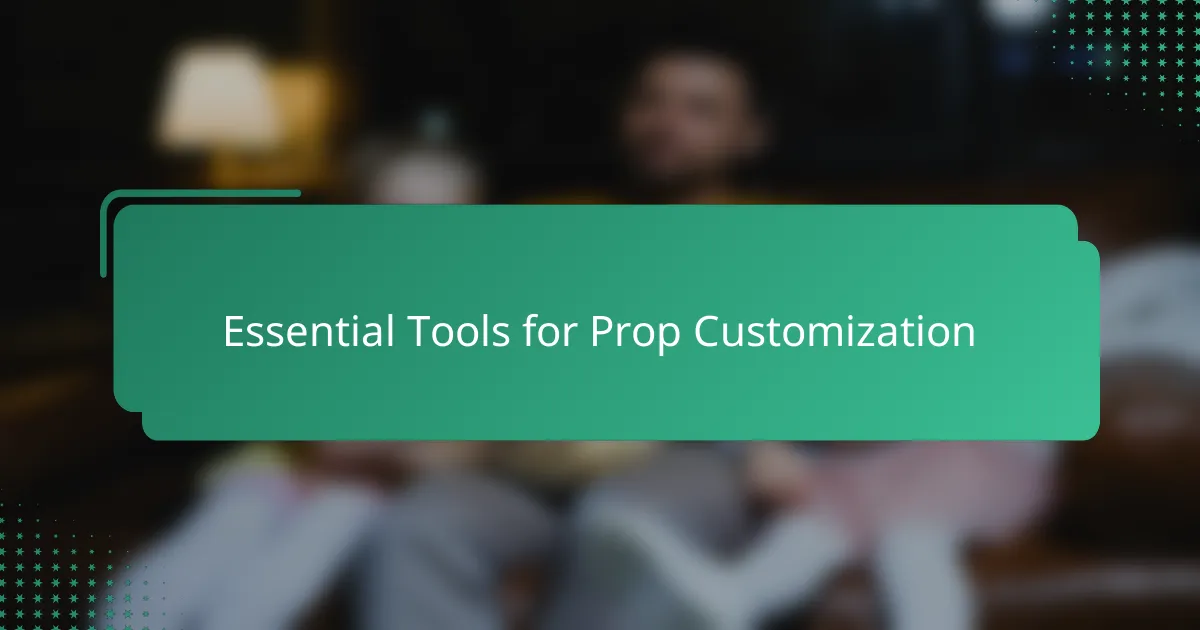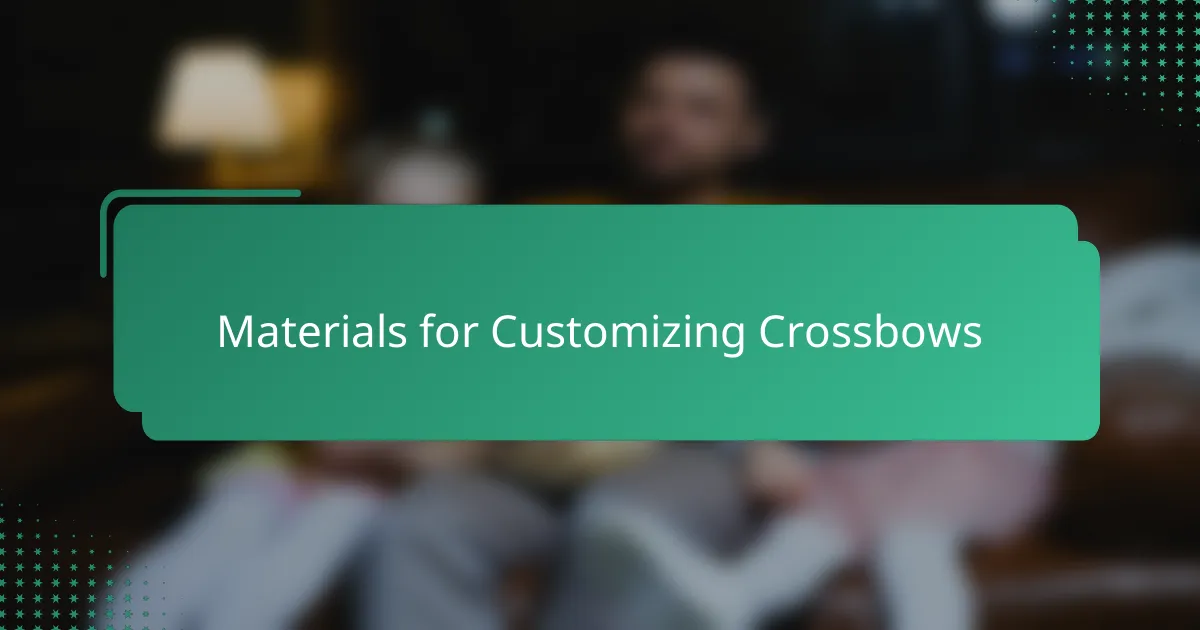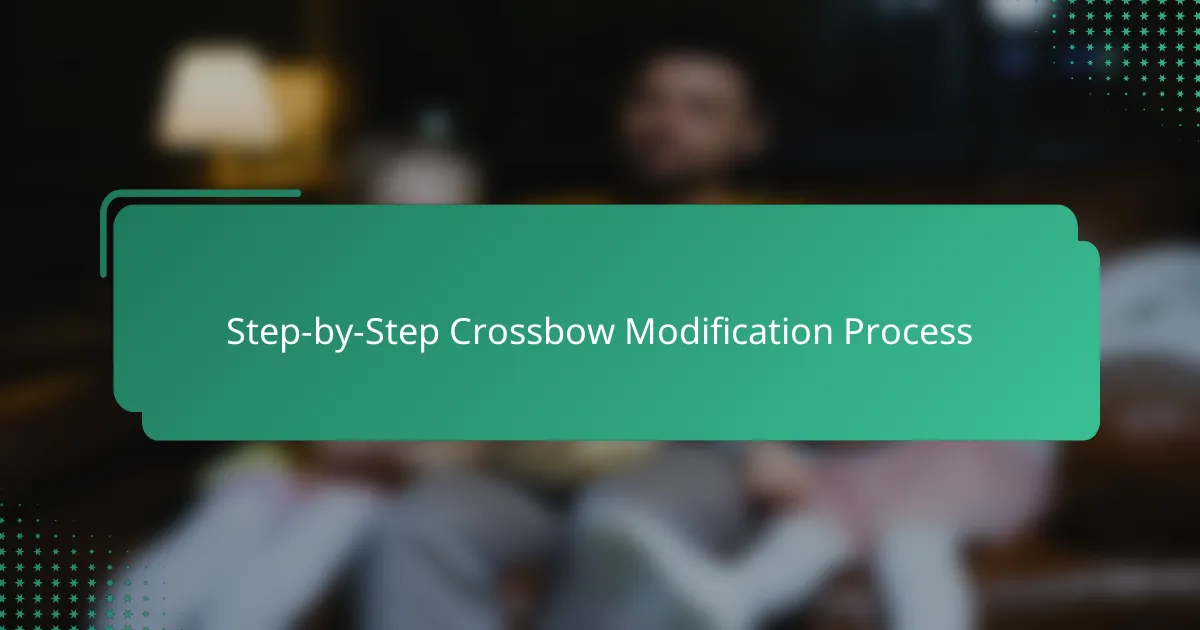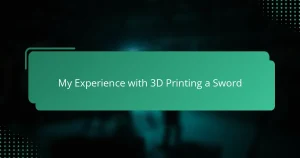Key takeaways
- Science fiction props serve as storytelling tools, blending creativity with realism through careful design and craftsmanship.
- Essential tools for prop customization include precision screwdrivers, rotary tools, and quality adhesives to enhance both detail and durability.
- Choosing a lightweight base and appropriate materials, like foam and layers of plastics, is crucial for ease of modification and achieving the desired futuristic look.
- Adding authentic details such as weathering effects and LED lights brings props to life, making them feel interactive and enhancing their overall appeal.

Understanding Science Fiction Props
Science fiction props have always fascinated me because they blur the line between imagination and reality. Have you ever held a prop and felt like it carried a piece of another world? For me, understanding these items means diving into the story behind their design and purpose.
What strikes me most is how these props aren’t just objects; they’re storytelling tools. Each detail, from the textures to the futuristic elements, serves to build a believable universe. When I first examined a sci-fi crossbow, I was amazed by how the prop’s craftsmanship conveyed both function and fantasy.
I often wonder, how does one balance creativity with realism when designing such pieces? In my experience, it requires a deep appreciation for both science fiction lore and practical construction techniques. This balance is what makes sci-fi props so captivating and inspires me every time I customize one for cosplay.

Essential Tools for Prop Customization
When I started customizing my crossbow, I quickly realized that having the right tools was a game changer. Basic items like precision screwdrivers, fine sandpaper, and a reliable craft knife made tackling the smallest details not just manageable but genuinely enjoyable. Without those essentials, I imagine the process would have felt frustrating and tedious, which is the last thing you want when bringing a sci-fi vision to life.
One tool I never expected to become my favorite was the rotary tool. It’s incredibly versatile—I used it to carve intricate patterns and smooth out edges, which gave the crossbow that authentic, futuristic feel I was aiming for. Have you ever tried shaping tiny details by hand? For me, the rotary tool saved countless hours and really elevated the final result beyond what I thought possible.
And then there’s the importance of having quality adhesives and paints. When customizing props, a strong, flexible glue ensures everything stays together during conventions and photoshoots, while the right paints bring depth and realism to the surface. I learned the hard way that cutting corners on these can ruin even the most carefully crafted prop, so investing in good materials felt like a small price for peace of mind—and a more convincing cosplay.

Choosing the Right Crossbow Base
Picking the right crossbow base was a crucial first step, and honestly, it felt a bit overwhelming at first. Should I go for a realistic hunting-style crossbow or one that already had a sci-fi vibe? I opted for a simple, lightweight model because it gave me more freedom to reshape and add futuristic elements without wrestling with extra bulk.
I remember handling several options before settling on one, paying close attention to the material and overall shape. A plastic base seemed ideal since it was easier to sand down and carve than metal or wood. Have you ever tried customizing a prop that’s too heavy or rigid? Trust me, it quickly drains your enthusiasm and slows down progress.
Another thing I considered was functionality versus appearance. While the base didn’t need to shoot bolts, it had to feel sturdy enough to hold all the added parts without wobbling. Balancing durability and ease of modification made me realize how much thought goes into even the simplest-looking sci-fi props.

Materials for Customizing Crossbows
When I first dug into customizing my crossbow, choosing the right materials felt like opening a whole new chapter. Foam was my go-to—it’s lightweight and easy to shape, perfect for adding those sharp sci-fi edges without turning the prop into a workout buddy. Have you ever struggled with heavy materials that just weigh you down at conventions? Trust me, foam saved me from that headache.
I also found that layering different types of plastics really helped achieve the sleek, futuristic look I wanted. PVC sheets were surprisingly forgiving when I cut and sanded them, and they held paint beautifully. But here’s a tip from experience: always test your adhesives with each material because what sticks well to foam can sometimes fail on plastic, and nothing’s more frustrating than pieces falling apart mid-photoshoot.
Finally, I can’t overlook the role of detailing materials—like metallic paints, LED strips, and even some small screws for a touch of realism. Adding those tiny bits made the crossbow feel functional, not just decorative. Have you ever noticed how little details can transform a simple prop into something that stops people in their tracks? That moment of seeing your work come alive is totally worth the extra effort.

Step-by-Step Crossbow Modification Process
I began the modification by carefully disassembling the crossbow, which gave me a clear canvas to work on. Removing the standard parts wasn’t just about convenience; it helped me visualize where I could add sci-fi elements without compromising the prop’s integrity. Have you ever felt that satisfying moment when a blank base suddenly holds endless possibilities?
Next, I focused on reshaping the limbs and stock using my rotary tool and foam layers. This step was where the magic started to unfold—transforming basic curves into sharp, angular lines that scream futuristic design. It was challenging, sure, but each carved edge made the crossbow feel more like a weapon from another world, and that kept me motivated through the tricky parts.
Finally, assembling the modified pieces required patience and precision. Gluing foam to plastic and integrating small mechanical details tested my skills, but seeing the parts come together without wobbling gave me a huge sense of accomplishment. Have you ever experienced that rush when your project starts to look just like you imagined? That’s what I live for during prop customization.

Adding Authentic Details and Effects
Adding authentic details and effects was where my crossbow really started to come alive. I knew that tiny accents like weathering paint, subtle scratches, and metallic highlights would give it that lived-in, battle-worn look so common in sci-fi universes. Have you ever noticed how a few carefully placed scuffs can transform a prop from looking store-bought to genuinely used? For me, those imperfections told the silent story of countless adventures.
I also experimented with layering transparent paints and dry brushing to create glowing panel effects and circuitry patterns. It was thrilling to see the crossbow mimic the kind of tech I’d admired in movies, almost as if it could power up at any moment. Adding LED strips was a game-changer, too—installing tiny lights in the limbs made the piece feel interactive, not just static. How often do you get to hold a prop that almost feels alive? That hands-on involvement made the entire customization deeply satisfying.
Then there were small mechanical details like faux screws, rivets, and wires to simulate functionality. It’s funny how such minor touches can trick the eye into accepting the prop as a real, working device. I spent hours positioning each piece just right, and when I looked at the finished product, a wave of pride hit me. It wasn’t just a crossbow anymore; it was a character in its own right, ready to step off the shelf and into the spotlight.

Tips for Safe and Durable Cosplay Props
When it comes to cosplay props, safety is something I can’t stress enough. I’ve learned the hard way that even the coolest-looking crossbow is no fun if it’s sharp or unstable. That’s why I always make sure to sand down any rough edges and reinforce joints with flexible adhesives—it keeps me and everyone around me safe without sacrificing durability.
Durability itself is often overlooked, but it’s crucial for surviving long convention days. I once brought a prop that wasn’t properly secured, and it started falling apart mid-event—talk about a nightmare! From that experience, I now double up on gluing and add internal supports whenever possible, which has saved me countless repair headaches. Have you ever been stuck fixing a broke prop when all you wanted was to enjoy the show?
One trick I always use is picking lightweight materials that still feel sturdy, like EVA foam paired with PVC reinforcements. This combo gives my props resilience without the bulk, and it’s easier on my arms during long photo sessions. Balancing weight, strength, and safety feels like a constant puzzle, but nailing it makes wearing and showing off your cosplay so much more rewarding.


